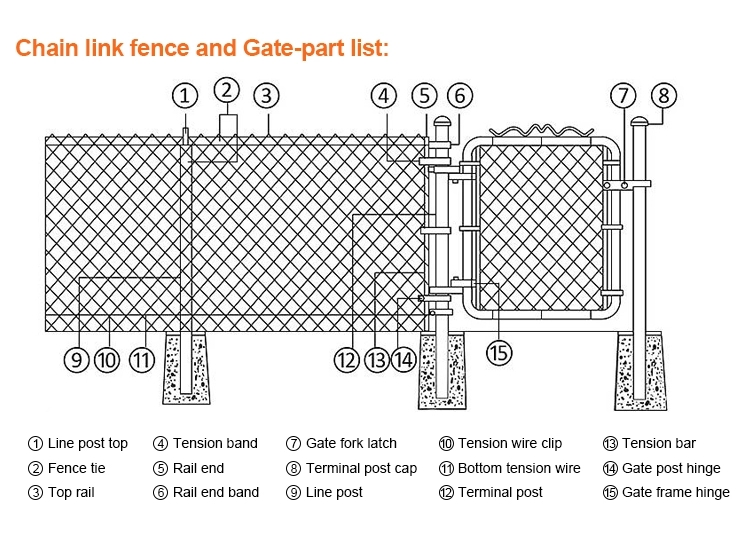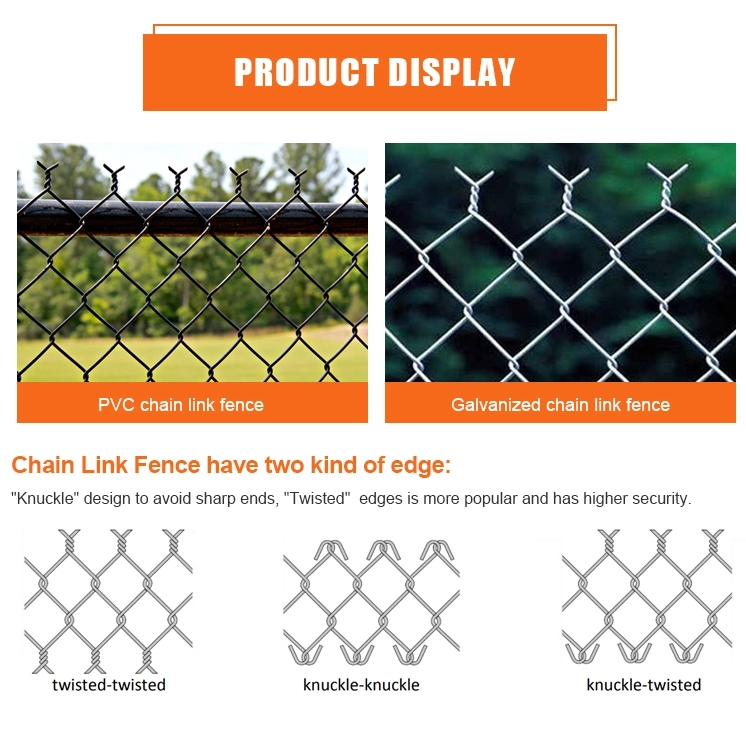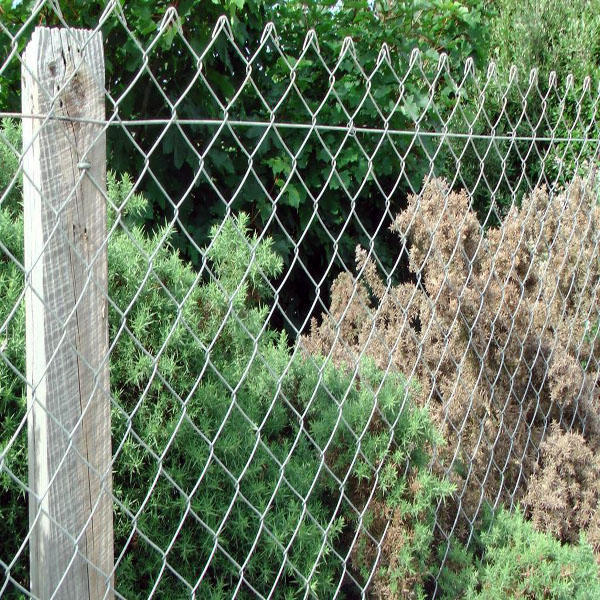Ago . 13, 2025 05:20 Back to list
Chain Link Fence - Anping County Puersen Hardware Wire Mesh Products Co., Ltd | Durable, Versatile, Reliable
Chain link fences, also known as wire mesh fence or cyclone fence, are a staple in modern fencing solutions. Their unique woven structure, typically made from galvanized or PVC-coated steel wires in green or black, offers a balance of durability, flexibility, and cost-effectiveness. This article delves into the technical specifications, applications, and advantages of chain link fences, while also highlighting the expertise of Anping County Puersen Hardware Wire Mesh Products Co., Ltd, a leading manufacturer in the industry.
Understanding the Design and Construction of Chain Link Fences
Chain link fences are characterized by their distinct diamond mesh design, created by vertically oriented wires bent into a zig-zag pattern. This configuration not only enhances the fence's structural integrity but also allows for flexibility, making it suitable for various terrains and applications. The wires are typically made from galvanized steel, which provides corrosion resistance, or PVC-coated steel, offering additional protection against environmental elements.

The versatility of chain link fences is further enhanced by their adaptability to different sizes and configurations. For instance, the 1-inch chain link fence (shown in the image below) is ideal for applications requiring finer mesh openings, such as playgrounds or animal enclosures.


Technical Specifications and Customization Options
The following table outlines the key technical specifications of chain link fences, which can be tailored to meet specific customer requirements:
| Specification of Chain Link Fence | |||||||||
|---|---|---|---|---|---|---|---|---|---|
| Mesh opening | 1'' | 1.5'' | 2'' | 2-1/4" | 2-3/8'' | 2-1/2" | 2-5/8" | 3'' | 4'' |
| 25mm | 40mm | 50mm | 57mm | 60mm | 65mm | 70mm | 75mm | 100mm | |
| Wire diameter | 18Ga - 13Ga | 16Ga - 8Ga | 14Ga-6Ga | ||||||
| 1.2mm-2.4mm | 1.6mm - 4.2mm | 2.0mm-5.00mm | |||||||
| Width of per roll | 50M - 100M(or more) | ||||||||
| Length of per roll | 0.5M - 6.0M | ||||||||
| Round post & rail diameter | 32mm, 42mm,48mm,60mm,76mm,89mm | ||||||||
| Round post & rail thickness | 0.8-5.0mm | ||||||||
| Surface treatment | Hot dipped galvanized or PVC coated | ||||||||
| Materials and specification can be made according to customer detailed requirements | |||||||||
Key Advantages of Chain Link Fences
Chain link fences offer a range of benefits that make them a preferred choice across industries:
- Durability: The galvanized or PVC-coated steel wires ensure resistance to rust and environmental degradation, extending the fence's lifespan.
- Cost-Effectiveness: Compared to other fencing materials, chain link fences provide a budget-friendly solution without compromising on quality.
- Flexibility: The mesh design allows for easy installation on uneven terrain and adaptability to various structures.
- Safety: Chain link fences are commonly used in playgrounds and sports facilities to create secure boundaries while maintaining visibility.
- Versatility: From residential properties to highways and railway perimeters, chain link fences are suitable for diverse applications.
Applications Across Industries
Chain link fences are widely used in the following sectors:
- Schools and Playgrounds: Known as playground fences or sport fences, they provide secure boundaries for children's activities.
- Residential Areas: Ideal for marking property lines and ensuring privacy.
- Highways and Railways: Used to delineate and secure infrastructure zones.
- Agriculture: Effective for animal enclosures due to their robustness and ease of installation.
- Public Spaces: Commonly found in gardens, ports, and recreational grounds.
Company Background: Anping County Puersen Hardware Wire Mesh Products Co., Ltd
As a leading galvanized steel fence manufacturer, Anping County Puersen Hardware Wire Mesh Products Co., Ltd has established itself as a trusted provider of high-quality fencing solutions. With a focus on innovation and customer satisfaction, the company offers customized chain link fences tailored to specific project requirements. Their commitment to quality is evident in the meticulous attention to detail during production, ensuring that each product meets stringent industry standards.
For more information about the company's manufacturing capabilities and product range, visit their official website.
Industry Standards and Compliance
Chain link fences are designed to comply with NIST (National Institute of Standards and Technology) guidelines for durability and safety in infrastructure projects. According to NIST, "Structural integrity and material resilience are critical factors in selecting fencing solutions for high-traffic areas" (NIST, 2023). This aligns with the specifications of chain link fences, which are engineered to withstand harsh environmental conditions and frequent use.
For further details on NIST standards, refer to the official NIST website.
Conclusion
Chain link fences remain a reliable and versatile fencing solution for a wide range of applications. Their combination of durability, cost-effectiveness, and adaptability makes them a preferred choice for both residential and industrial settings. With Anping County Puersen Hardware Wire Mesh Products Co., Ltd leading the way in innovation and quality, the future of chain link fencing looks promising. Whether for playgrounds, highways, or agricultural enclosures, chain link fences continue to set the benchmark for performance and value.
References
National Institute of Standards and Technology (NIST). (2023). Structural Integrity and Material Resilience in Infrastructure Projects. Retrieved from https://www.nist.gov/
-
Chain Link Fence-Durability&Versatility|Anping County Puersen
NewsAug.13,2025
-
Chain Link Fence - Anping County Puersen Hardware Wire Mesh Products Co., Ltd | Durable, Versatile, Reliable
NewsAug.13,2025
-
Chain Link Fence-Galvanized Steel|Durability,Versatility
NewsAug.13,2025
-
Chain Link Fence - Anping County Puersen Hardware Wire Mesh Products Co., Ltd. | Durable, Versatile Fencing Solution
NewsAug.13,2025
-
Welded Wire Mesh for Industry Factory - Durable & Custom Solutions
NewsAug.13,2025
-
Chain Link Fence-Galvanized Steel Fence Factory|Durable&Versatile
NewsAug.12,2025

